Flying the Bell AH-1 Cobra Gunship
February 18th, 2023
6 minute read
Flying a Cobra gunship is a bit like wearing it. The first time I climbed into the cockpit of an S-model AH-1 Cobra, I was struck by how skinny the thing was. The aircraft just wraps around you. Particularly from the front seat, the view is simply spectacular.
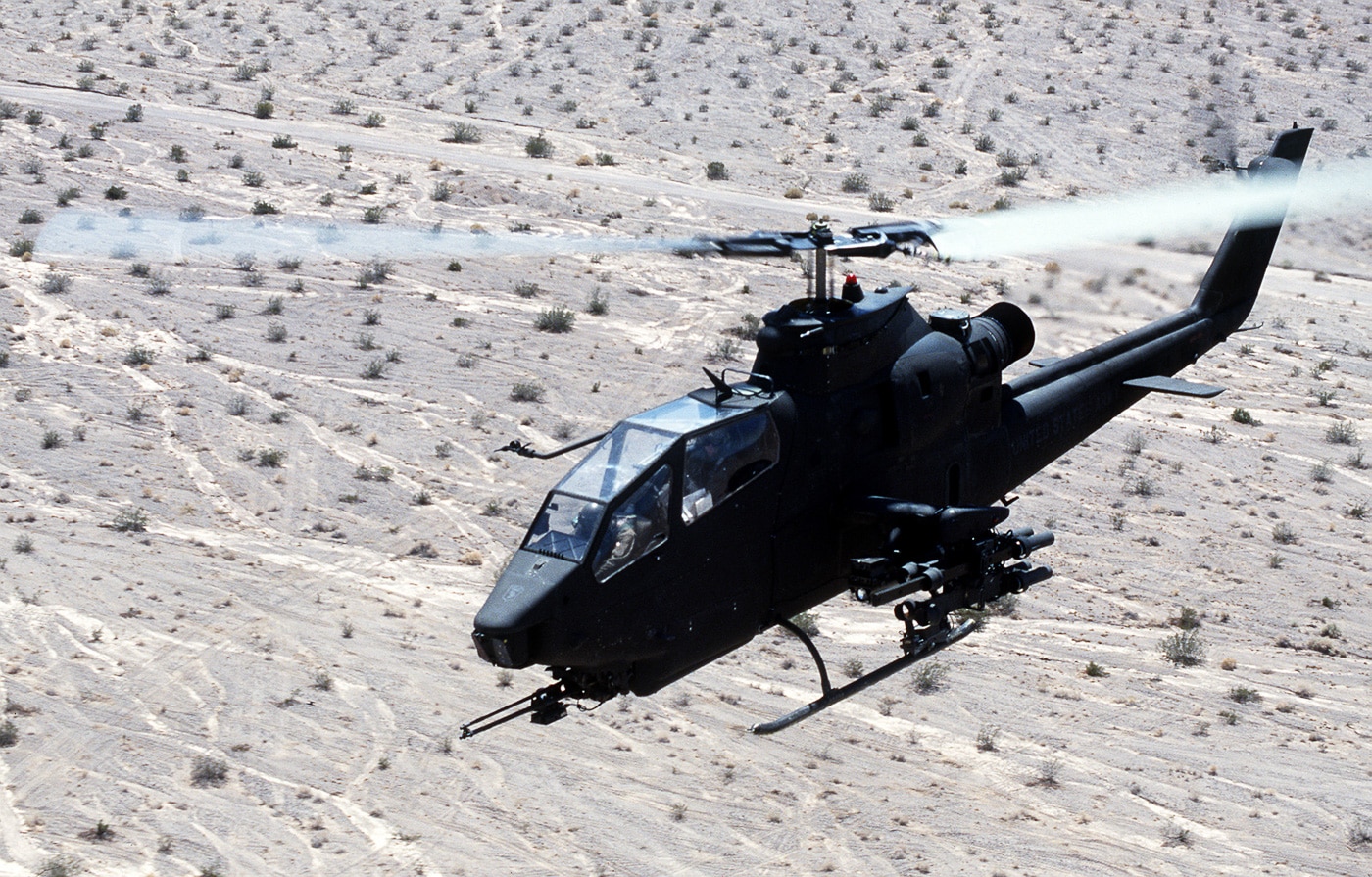
The S-model represented the apex of Cobra evolution in Army service. They were universally referred to as Snakes. The Marines took them to yet more rarefied heights, but the AH-1S was the end of the road for the Army’s first dedicated helicopter gunship. It was an undeniably sexy beast.
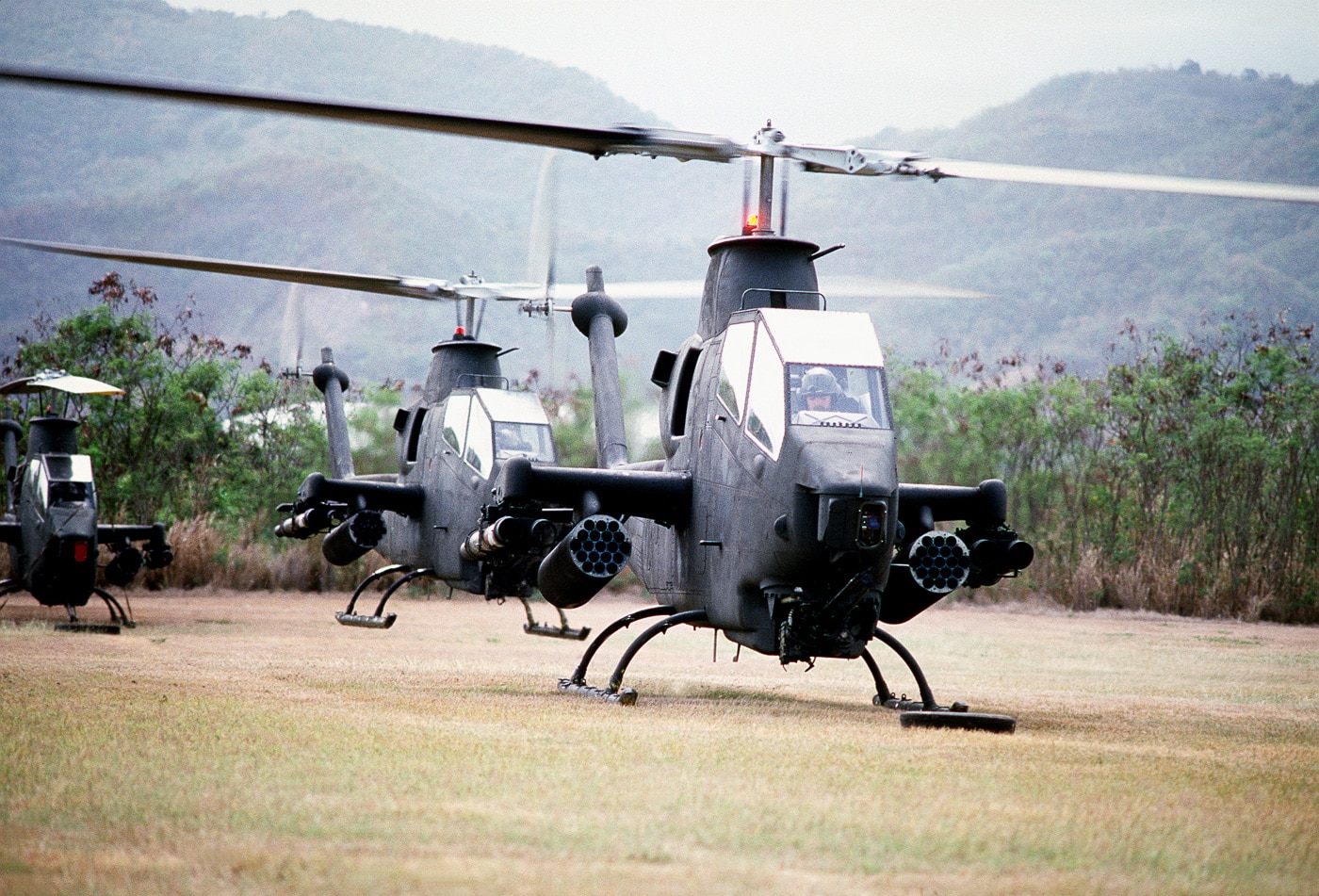
There are two broad categories of helicopter rotor systems. The semi-rigid design found on Hueys, Army Cobras, and OH-58s is akin to a teeter-totter. This two-bladed system pivots at its midpoint to compensate for the dissimilar physics experienced by the advancing and retreating blades when the aircraft is in forward flight. By contrast, the fully-articulated systems used on the CH-47, UH-60, and AH-64 are designed such that each individual blade pivots on a hinge attached to the rotor head. The practical differences are fairly significant.
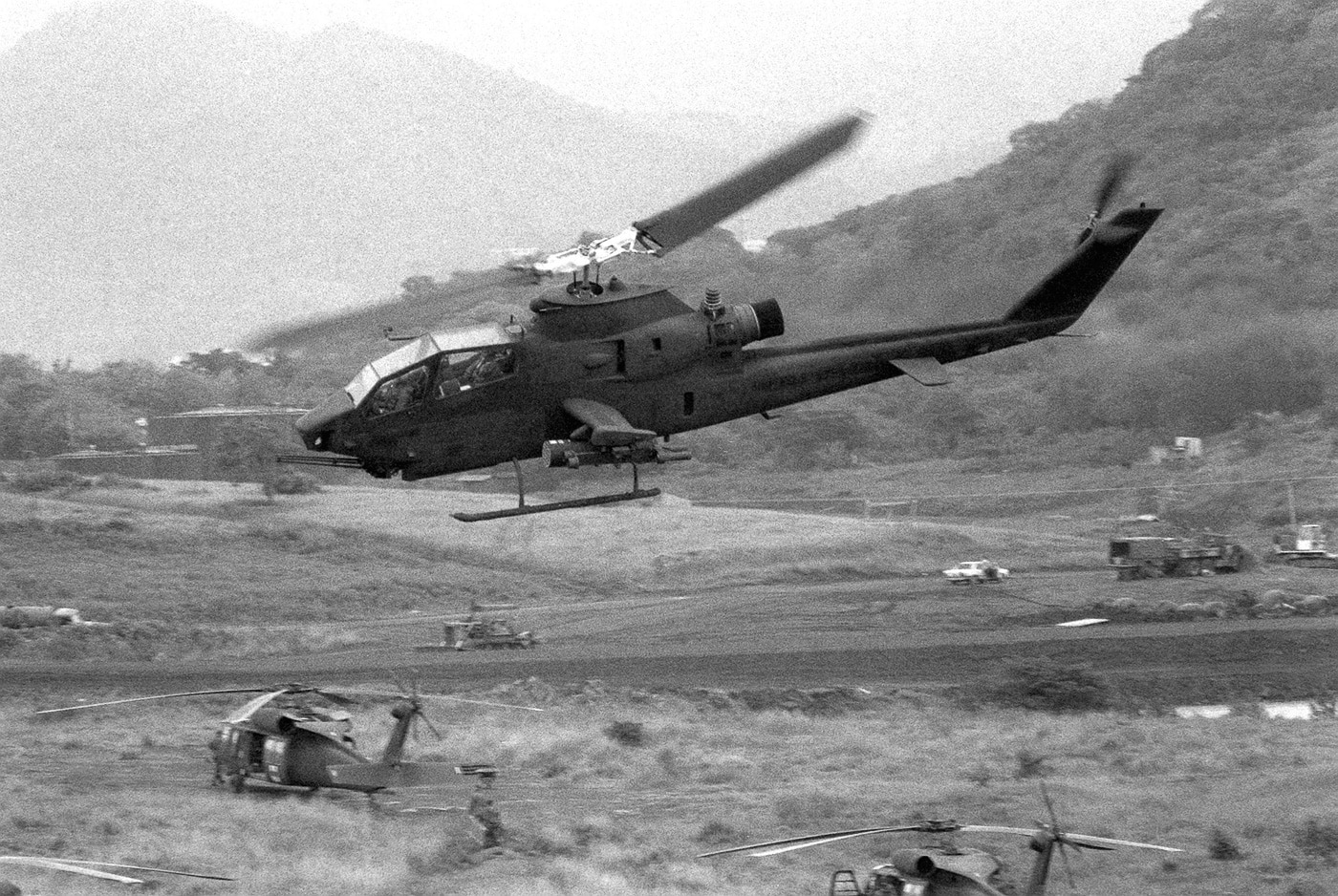
Fully articulated rotors are fairly forgiving of quasi-aerobatic maneuvering, but a semi-rigid rotor system must always remain under a positive G-load. Our maneuvering limits for the UH-1, AH-1, and OH-58 were one-half positive G. Practically speaking, that meant that you had to be careful when clearing a terrain feature at low level and high speed. Pitching the nose down sharply unloads the rotor head and flirts with weightlessness. Be unduly aggressive with this, and the rotors can come apart. Don’t tell anybody, but that didn’t stop me from rolling a Snake inverted once in the high-speed dive box at Fort Rucker. Young men are so terribly stupid.
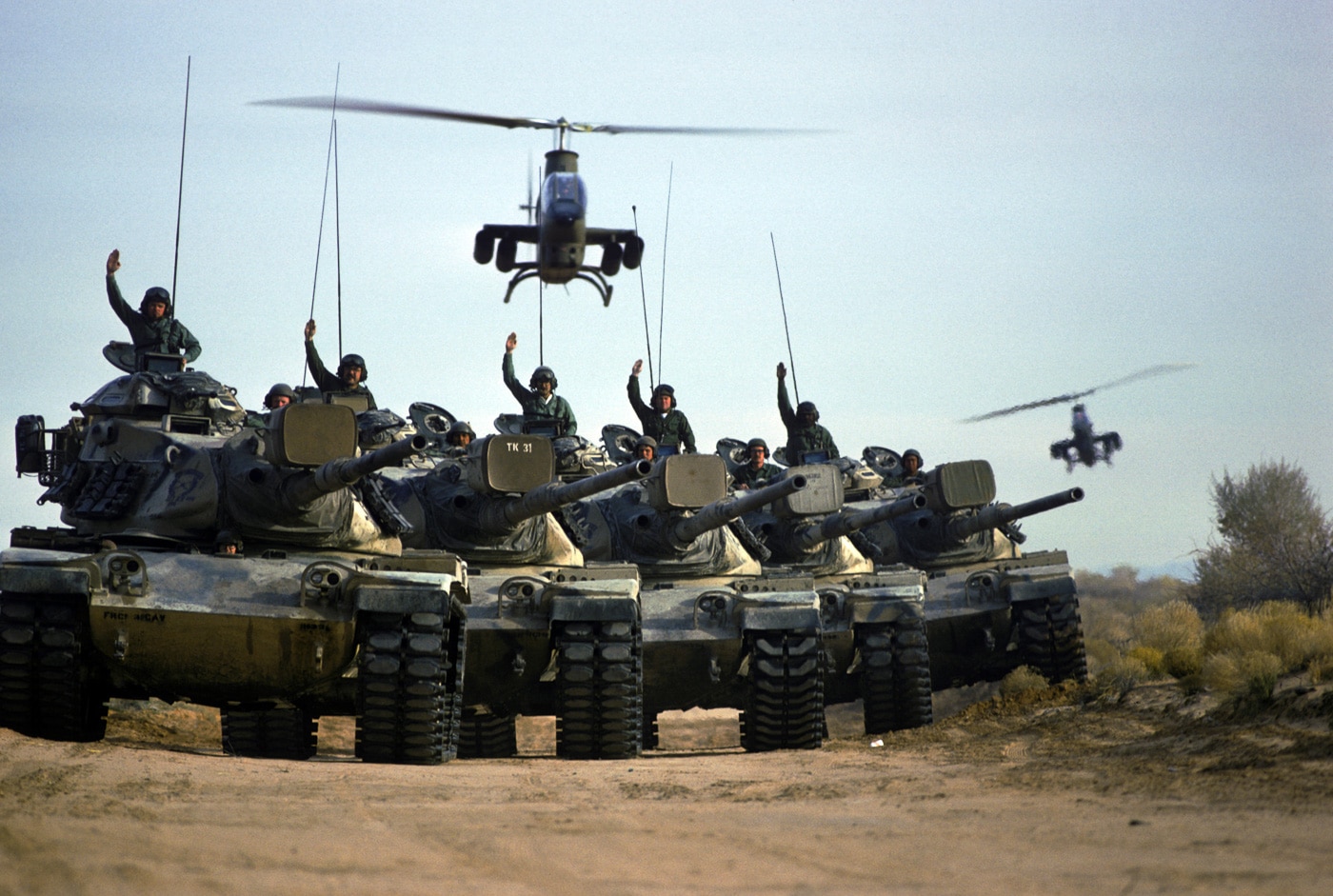
The semi-rigid rotor produces a stark one-to-one vibration as you power up the aircraft. It’s a weird feeling. Once you get the aircraft up to speed, however, it is a joy to fly. One of my warmest memories as an Army aviator was chasing alligators in a Cobra flying about three feet above some forgotten Alabama river.
Origin Story
In the early 1960’s, the U.S. military first established the doctrine of vertical envelopment and air assault using early combat helicopters. UH-1 Hueys offered unprecedented mobility and shock effect for troops on the battlefield, However, these lightly-armed aircraft were terribly vulnerable, particularly as they approached a contested landing zone. Air Force strike fighters were handy, but they were really too fast to offer the sort of precise fires necessary to support the lift aircraft down in the dirt. The first dedicated helicopter gunship was actually adapted from the piston-driven H-13.
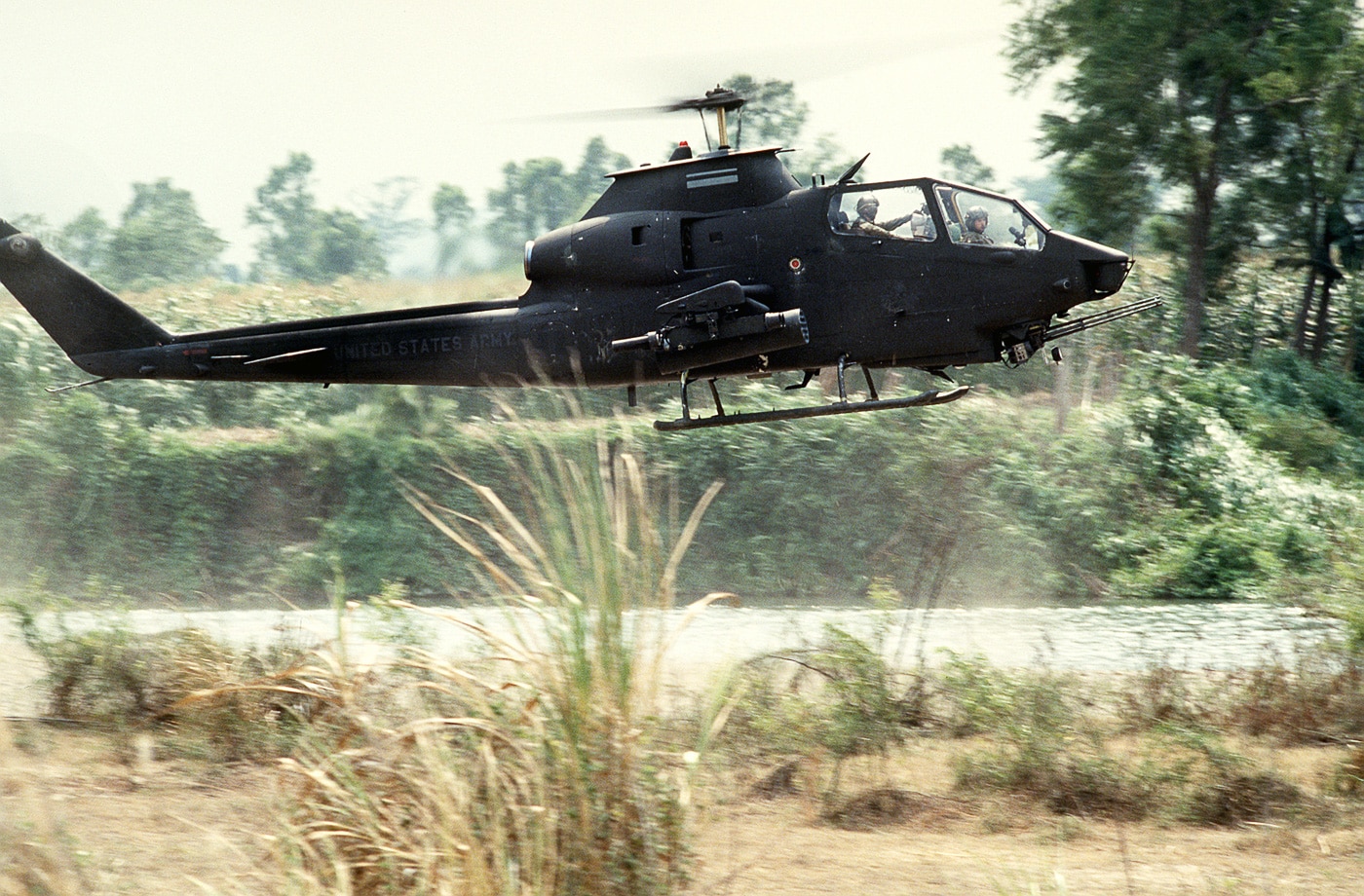
The H-13 was the grasshopper-looking aircraft used on the TV show MASH. However, this spindly machine lacked the payload to be an effective gunship. The first truly effective helicopter gunships were Mike-model Hueys. These modified UH-1 transport helicopters were called Hogs and sported four M-60 machineguns along with a pair of 2.75” rocket pods on side pylons and a 40mm automatic grenade launcher in the nose. Sometimes the four M-60s were replaced by a pair of M-134 miniguns. However, this was a stop-gap solution. The result was the new AH-1G Cobra.
The earliest AH-1G Cobras first saw combat service in Vietnam in the summer of 1967. While the AH-1 and UH-1 were visually quite dissimilar, those early Snakes actually shared a great deal of engineering with their lift brethren. The main rotor, tail rotor and engine were common between the two machines.
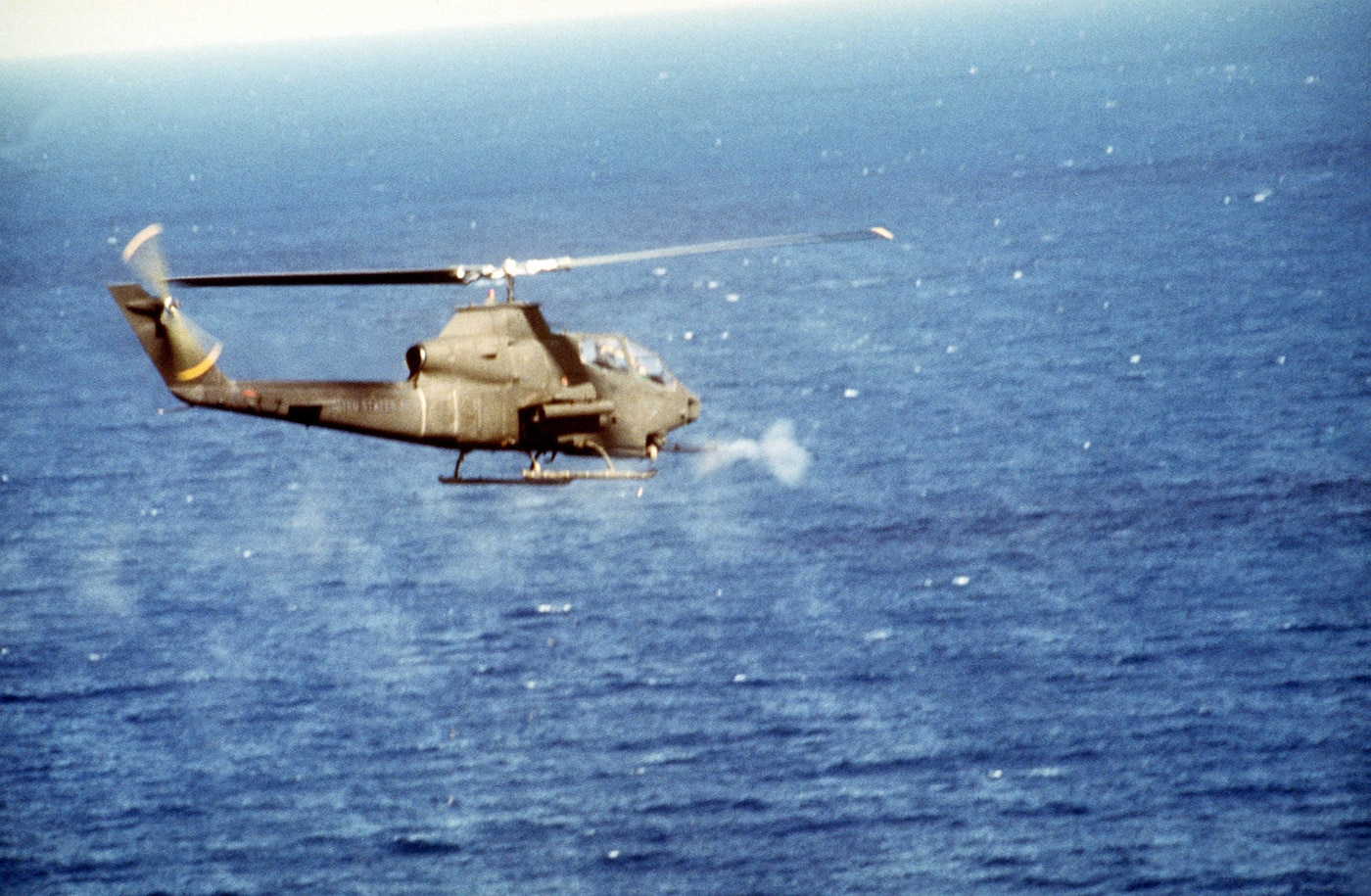
As the machinery evolved so did the tactics. In short order, Cobras were being employed as part of Pink Teams consisting of one or two Cobras paired with an OH-6 Loach observation aircraft. The Loach flew low and slow, scouting targets down in the weeds, while the Snake orbited up high, waiting for prey. These two aircrews coordinated their every move via radio. Once targets were identified, the Loach would break clear so the more heavily armed Cobra could roll hot from altitude and bring the pain.
Details
Those early AH-1G Cobras could be equipped with a variety of weapons including pylon-mounted M-61 Vulcan automatic 20mm cannon. However, the most common load-out was four 2.75″ rocket pods under the stubby wings, each carrying either seven or 19 rockets. The rockets fired along the aircraft centerline and were typically managed by the pilot who sat in the rearmost position in the cockpit. The co-pilot/gunner in the front ran the chin turret. The turret typically mounted an M-134 minigun on one side and a 40mm automatic grenade launcher on the other. These mounts were universal, however, so individual aircraft could fit a pair of miniguns or a pair of grenade launchers as the tactical situation demanded.
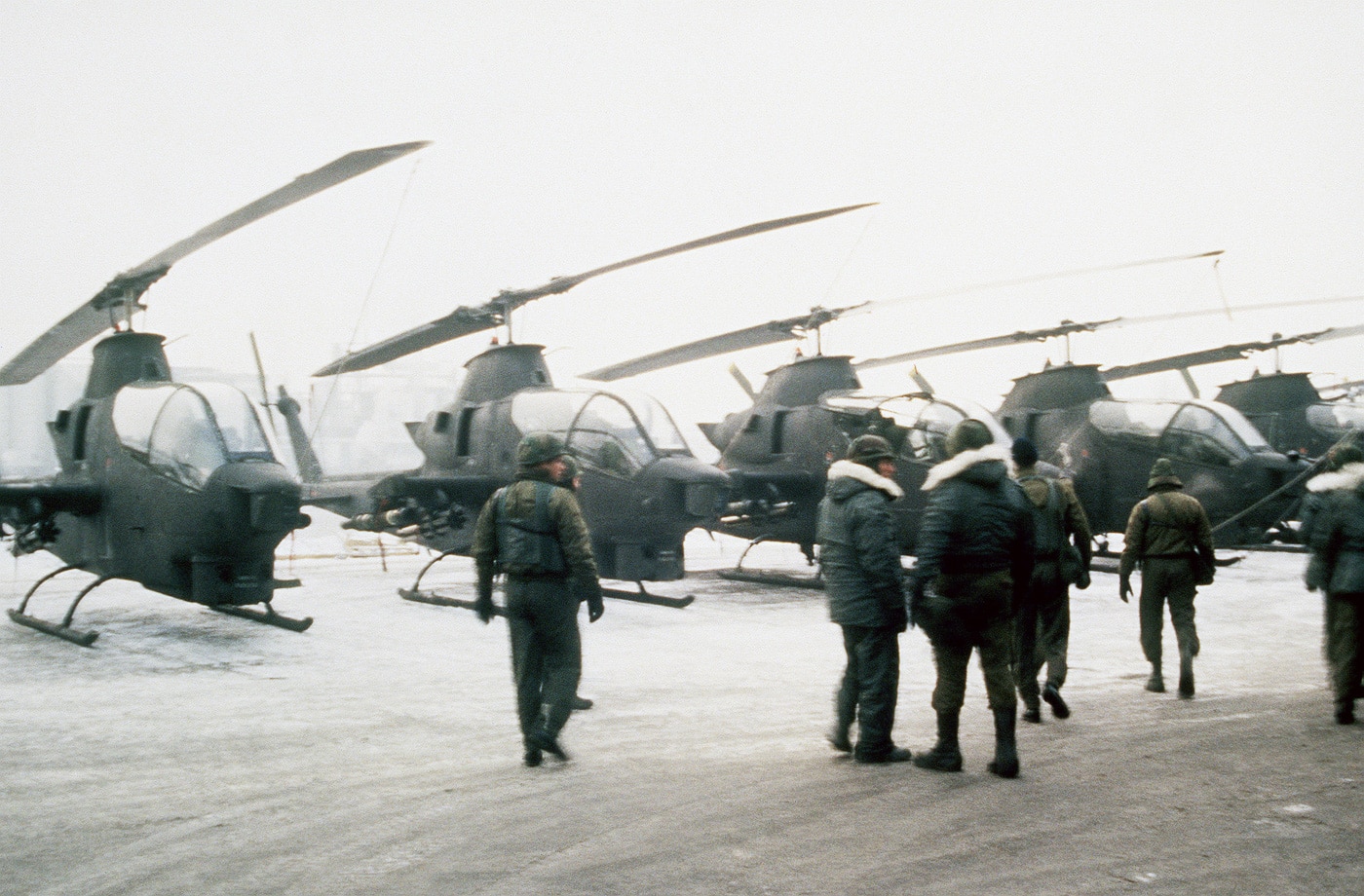
Once the Vietnam War drew to a close, the Army’s mission evolved. Where previously the enemy was well-entrenched jungle fighters in small groups, in the 1970’s and 80’s, the problem was massed Warsaw Pact armor on the plains of Europe. This demanded a radical rethink of both the design and employment of attack aircraft. The result was the AH-1F and AH-1S Cobras.
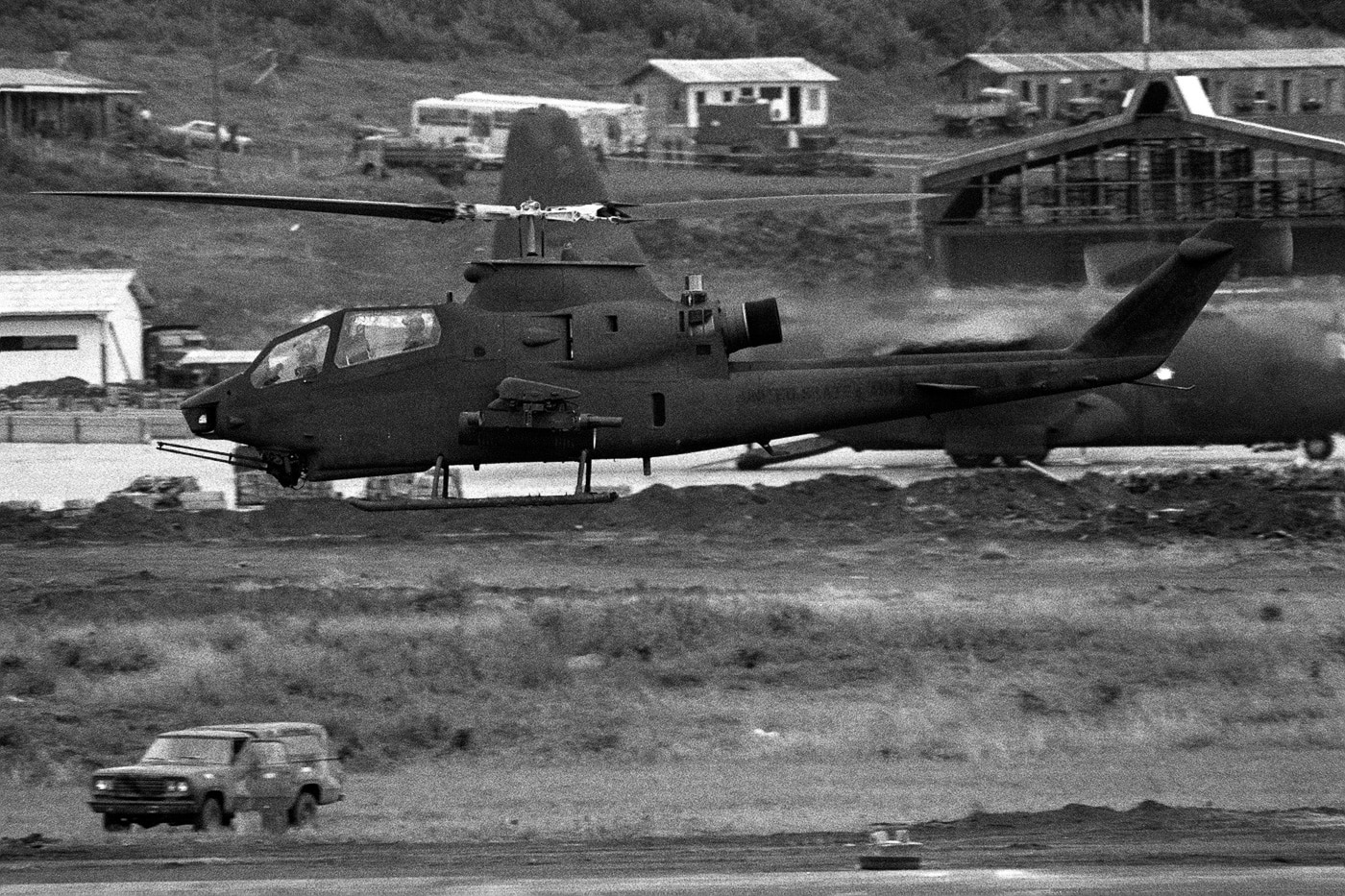
The S-model is distinguished from the previous sort at a glance by its flat plate windscreen and tapered rotor tips. For reasons I never fully understood, the tail rotor was moved to the opposite side as well. These Cold War gunships packed a single three-barrel M-197 20mm cannon in the chin turret and the fire control equipment to manage TOW missiles off of the wings.
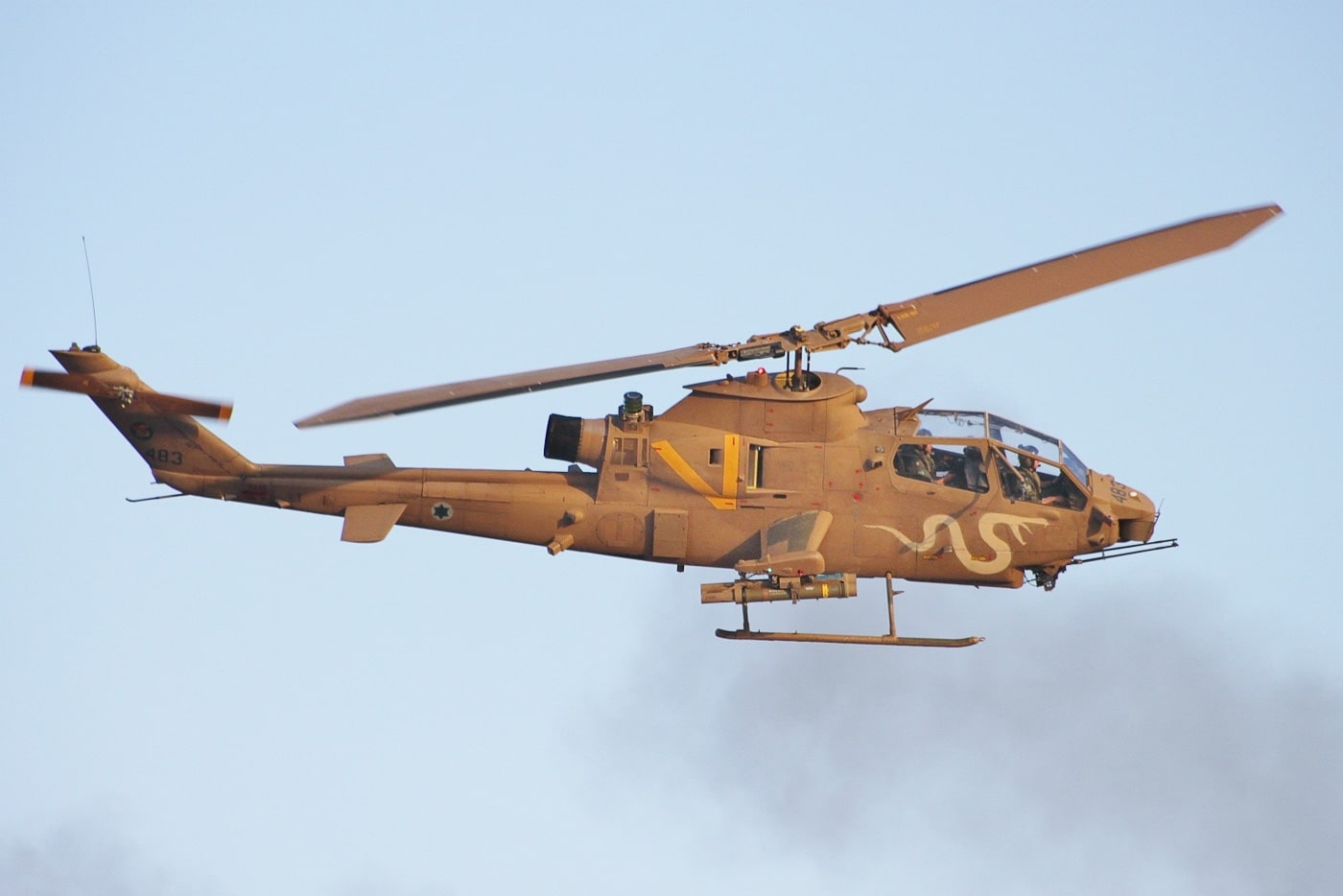
TOW stands for Tube-launched, Optically-tracked, Wired-guided. These weapons were purpose-designed to kill tanks. They reach out to around three kilometers. A few TOW missiles were used against advancing NVA armor at the end of the Vietnam War, but most of their combat usage from airborne platforms took place in the Middle East. These late-model Snakes still carried 2.75″ rocket pods as well.
Ruminations
I will forever carry a soft spot in my heart for the Cobra gunship. However, once they added applique armor and all the fire control equipment required to manage the TOWs, the resulting aircraft was fairly underpowered. The thing was still fast — its VNE (Velocity never-to-exceed) was 170 knots or nearly 200 miles per hour. However, the Cobra was sluggish with a full load of fuel and ammo. In hot/high conditions, a full combat load would often exceed the aircraft’s performance limitations.
A nicely tuned AH-1S cruised at around 149 knots and had a maximum takeoff weight of 9,500 pounds. Its Lycoming T53-L-703 turboshaft engine put out 1,800 shaft horsepower. As the world’s first truly dedicated helicopter gunship, the Snake laid a foundation for much greater things to come.
Editor’s Note: Please be sure to check out The Armory Life Forum, where you can comment about our daily articles, as well as just talk guns and gear. Click the “Go To Forum Thread” link below to jump in!
Join the Discussion
Continue Reading
Did you enjoy this article?

 925
925






